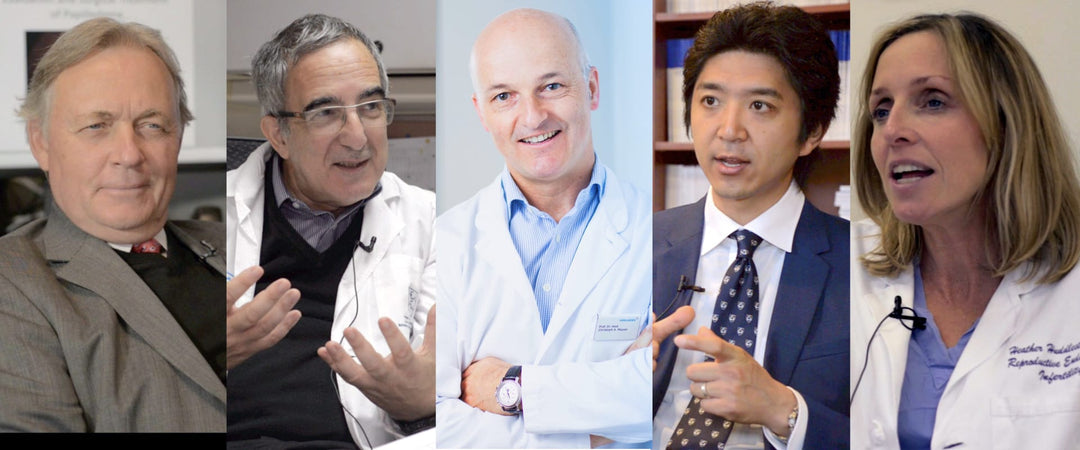アミロイドーシス研究および治療の世界的権威であるマーク・ピープス教授(医学博士)は、この疾患が異常なタンパク質の沈着によって引き起こされる、まれながらも致死的な病態であると説明します。診断の遅れが不可逆的な臓器障害や6ヶ月以内の死亡につながるケースが多いため、早期発見が極めて重要であると強調。ピープス博士は、疾患の希少性や他疾患に似た多様な症状など、診断を困難にする要因についても言及しています。英国国立アミロイドーシスセンターでは、彼が開発した放射性トレーサーイメージングや心臓MRIといった先進的な診断技術を駆使し、患者の予後改善に取り組んでいる点を特筆しています。
アミロイドーシスの理解:診断、治療、そして早期介入の重要性
セクションへ移動
アミロイドーシスとは
アミロイドーシスは、異常な不溶性タンパク質繊維が組織や臓器の細胞外空間に沈着することで引き起こされる重篤な疾患です。Mark Pepys教授(医学博士)が説明するように、これらのタンパク質フィブリルは異なる前駆タンパク質から形成される可能性がありますが、類似の構造を共有しています。その蓄積は臓器の構造を歪め、進行性かつ重度の機能障害を引き起こします。
アミロイドーシスには多くの異なる形態があり、それぞれフィブリルを形成する特定のタンパク質によって分類されます。この多様性にもかかわらず、最終的な結果は臓器障害です。アミロイドーシスは希少疾患に分類されますが、先進国では約1000人に1人の死亡原因となっています。Anton Titov医学博士は、未治療のアミロイドーシスは常に致命的であるため、その認識と治療が臨床上の重要な優先事項であると指摘しています。
アミロイドーシス診断が困難な理由
アミロイドーシスの診断は、臨床医にとって重大な課題となります。その希少性から、多くの医師はキャリア全体を通じて数例しか経験しない可能性があります。この経験不足は、疾患に対する疑いの指標を低くする一因となります。
さらに、Mark Pepys教授(医学博士)が強調するように、全身性アミロイドーシスは脳実質を除くほぼすべての臓器に影響を及ぼす可能性があります。これにより、潜在的な症状の範囲が非常に多様になります。患者は心不全、腎不全、神経障害、または肝臓、皮膚、脾臓の問題を呈する可能性があります。臨床像がより一般的な多くの状態に類似しているため、医師はしばしばアミロイドーシスを考慮せず、したがってそれを特定するために必要な特定の診断検査を指示しません。
診断遅延の結果
正しいアミロイドーシス診断の遅れは、患者にとって壊滅的な結果をもたらします。Pepys博士は、患者がしばしば複数の異なる病院で検査を受け、診断が最終的になされるまでに数年を費やし、時には偶然に診断される一般的なシナリオを説明しています。この長期にわたる診断の旅は、患者が専門家に紹介される頃には、しばしば進行した不可逆的な臓器障害を抱えていることを意味します。
この末期の症状は生存率に直接影響します。Anton Titov医学博士は、最も一般的な全身性形態であるALアミロイドーシスの患者の約4分の1が、診断後6か月以内に死亡するという厳しい統計について議論しています。この短い生存期間は、主に効果的な治療法の欠如によるものではなく、治療開始前にすでに発生している広範かつ不可逆的な損傷(特に心臓への損傷)の直接的な結果です。
専門アミロイドーシスセンターの役割
アミロイドーシスの複雑さと希少性を考慮すると、専門家によるケアが不可欠です。Mark Pepys教授(医学博士)は、成功した治療には、多様なアミロイドーシス症例を多数管理した豊富な経験を持つ臨床医が必要であると説明しています。この必要性に対応するため、英国国民保健サービス(UK National Health Service)は1999年に国立アミロイドーシスセンターを保健省から直接資金提供を受けて設立しました。
このセンターは専門知識を集中させ、全国の症例に対応します。これはユニークで世界をリードする機関であり、上級臨床医、看護師、放射線技師、科学者を含む60人以上のスタッフを擁しています。同センターは年間4000人以上の患者を診察し、そのうち約1000件が新規紹介であり、この複雑な疾患のすべての形態の診断と治療アドバイスにおいて比類のない深い経験を可能にしています。
アミロイドーシスのための高度な診断画像法
アミロイドーシス管理における大きな突破口は、1980年代にMark Pepys教授(医学博士)によって発明された診断技術からもたらされました。組織生検が診断のゴールドスタンダードであり続けていますが、それはごく小さな領域しかサンプリングせず、全身のアミロイド負荷を定量化することはできません。Pepys博士は、体内のどこにあってもアミロイド沈着物に特異的に局在する放射性トレーサーを使用する方法を開発しました。
この画像技術により、医師はアミロイドの完全な分布を確認し、沈着物が治療に応じて増加または減少しているかどうかを監視できます。元のトレーサーは心臓を画像化しませんでしたが、このギャップは心臓MRIの出現によって埋められました。Anton Titov医学博士は、心臓MRIが現在、心臓アミロイドーシスを詳細に診断、定量化、監視する非常に強力なツールであり、患者ケアにおける大きな進歩を代表していると強調しています。
全文書き起こし
Anton Titov医学博士: Mark Pepys教授は、アミロイドーシス研究と薬剤開発の世界的リーダーです。教授はアミロイドーシスの診断と治療発見に関する生涯の仕事について議論します。
Anton Titov医学博士: Mark Pepys教授、あなたはアミロイドーシス研究と治療の世界的リーダーです。アミロイドーシスとは何ですか?
Mark Pepys医学博士: アミロイドーシスは、異常な不溶性タンパク質繊維の沈着によって引き起こされる疾患です。それらは様々な組織や臓器の細胞外空間に沈着します。アミロイドーシスには多くの異なる形態があります。
Mark Pepys医学博士: アミロイドーシスは、これらのフィブリルを形成する異なるタンパク質によって特徴づけられます。最終的にはフィブリルを作るタンパク質の種類は重要ではありません。フィブリルは組織学的、形態学的、および様々な画像技術によって非常によく似て見えます。フィブリルは類似の効果を持ちます。それらは構造を歪め、したがって関与する組織の機能を損ないます。
Mark Pepys医学博士: アミロイドーシスは希少疾患です。おそらく先進国では約1000人に1人の死亡原因となっています。したがって、希少ではありますが、ほとんど存在しないほどではありません。
Mark Pepys医学博士: アミロイドーシスは臨床上非常に重要です。なぜなら、未治療のアミロイドーシスは常に致命的だからです。現在利用可能な最良の治療法を用いても、アミロイドーシスは依然としてほとんどすべての患者で致命的です。ただし、生存率は過去よりもはるかに改善されています。
Anton Titov医学博士: アミロイドーシスの臨床的認識とその診断における主要な問題はこれです。アミロイドーシスは十分に希少であるため、多くの医師はおそらく症例を経験したことがありません。おそらく医師は臨床キャリア全体でアミロイドーシスの症例を数例しか見ていないかもしれません。
Mark Pepys医学博士: もう一つの問題は、アミロイドーシスがほとんどあらゆる症状で現れる可能性があることです。これは、全身性アミロイドーシスが体中のあらゆる組織に影響を及ぼす可能性があるためです。例外は脳実質そのものです。
Mark Pepys医学博士: アミロイドーシスは、あらゆる組織またはあらゆる臓器に症状を呈して臨床的に現れる可能性があります。したがって、人々はアミロイドーシスを考えません。アミロイドーシスの患者は心不全または腎不全で現れる可能性があります。アミロイドーシスの患者は神経、皮膚、肝臓、または脾臓に問題を抱える可能性があります。
Mark Pepys医学博士: 体のどの部分もアミロイドーシスに関与する可能性があります。どの臓器も主要な関与部位となる可能性があります。アミロイドーシスに不慣れな臨床医はそれを考えません。したがって、医師は正しい診断検査を実施せず、アミロイドーシスを診断できません。医師はしばしばそれを認識しません。
Mark Pepys医学博士: 悲しいことに、これは私たちが非常によく経験することです。患者は疾患の経過の中で比較的遅くにアミロイドーシスと診断されます。
Anton Titov医学博士: アミロイドーシスの正しい診断は、しばしば数年病気になった後になされます。患者は時には多くの異なる病院で医師によって検査されます。そしてようやく誰かがアミロイドーシスを考えるか、または診断が偶然になされます。
Mark Pepys医学博士: 悲しいことに、それは患者が私たちのところに来る頃には手遅れかもしれないことを意味します。私たちはアミロイドーシスの認識と治療の専門家です。それでも今でも、それは起こります。患者の約4分の1は、最も一般的な全身性アミロイドーシスの形態であるALアミロイドーシスを患っています。患者は依然として診断後6か月以内に死亡します。それはアミロイドーシス治療のすべての進歩にもかかわらずです。アミロイドーシスは依然として非常に重大かつ深刻な未解決の医療ニーズです。
Mark Pepys医学博士: これが、アミロイドーシス診断後の生存期間がわずか6か月である理由です。それは正しい診断と治療開始までの時間差です。患者は様々な医師をたらい回しにされ、診断が下された後も非常に短い時間しか生きられません。それは患者がすでに臓器に不可逆的な損傷を負っているためです。
Anton Titov医学博士: アミロイドーシスは特に心臓を損傷します。アミロイドーシスは時々腎臓や他の臓器も損傷します。それらの機能不全の臓器を救うことは困難または不可能かもしれません。それが主要な問題です。
Mark Pepys医学博士: この比較的希少な疾患に対処する際のもう一つの問題はこれです。アミロイドーシスは非常に多様で、非常に複雑です。治療には真に専門的な臨床医が必要です。専門家は多くのアミロイドーシスを経験し、常に問題を管理していなければなりません。
Mark Pepys医学博士: これが、英国国民保健サービスが1999年に私たちを英国全体の国立アミロイドーシスセンターとして資金提供した理由です。私たちは英国の保健省から直接資金提供を受けています。私たちは全国のアミロイドーシス症例全体に対して診断および治療アドバイスサービスを提供しています。それはここに専門知識が集中していることを意味します。
Mark Pepys医学博士: これは確かにこの国でユニークです。私たちはアミロイドーシスにおいて世界をリードしています。私たちは世界のほとんどの他の医療センターよりも多くの患者とより多様な種類のアミロイドーシスを診ています。国立アミロイドーシスセンターには60人以上が在籍しています。上級および下級の臨床医、看護師、放射線技師、研究所の科学者、事務職員がいます。
Mark Pepys医学博士: 私たちは年間4000人以上のアミロイドーシス患者を診察します。約1000人の患者がアミロイドーシスの新規症例です。他の患者は経過観察です。
Mark Pepys医学博士: このセンターは、1980年代の私の発明に基づいています。私は全身性アミロイドーシスを診断および監視する新しい技術を発明しました。
Anton Titov医学博士: それまでアミロイドーシスを診断する唯一の方法は組織生検を行うことでした。適切な特殊染色を施して顕微鏡下で観察する必要がありました。それは依然としてアミロイドーシス診断のゴールドスタンダードです。しかし残念ながら、これらの生検は非常に小さいです。
Mark Pepys医学博士: 肝臓や心臓から生検を採取することはできます。しかし、臓器全体のごく微小なサンプルしか得られません。それからアミロイドがどれだけあるかを知ることはできません。微小な生検でアミロイドを見るだけです。その臓器や体内の他の臓器のどこにアミロイドーシスがあるかはわかりません。
Mark Pepys医学博士: 臓器全体を評価する唯一の方法は、罹患臓器の機能を評価することです。私はアミロイドーシスの診断技術を開発しました。放射性トレーサーを患者に投与します。このトレーサーは特異的にアミロイド沈着部位に集積します。他の部位には分布しません。
Mark Pepys医学博士: 静脈内にこのトレーサーを投与後、患者をイメージングできます。アミロイドの存在部位を可視化できます。アミロイドが増加しているか減少しているかを判定できます。これは定量的な診断検査です。非常に安全なモニタリング手技であり、アミロイド量に関する有益な情報を提供します。全身におけるアミロイドの分布状況を把握できます。
Mark Pepys医学博士: 現時点では、この診断技術では心臓のアミロイドを検出できません。これには様々な技術的理由があります。
Anton Titov医学博士: これらの問題は克服が不可能でした。しかし幸いなことに、現在我々は心臓MRIを有しています。これは極めて強力な技術です。心臓MRIにより、医師は心アミロイドーシスの診断、経過観察、定量化、詳細かつ深遠な研究が可能となります。心臓MRIは近年の非常に重大な進歩です。
Mark Pepys医学博士: 1980年代にその最初のトレーサー技術が開発されました。現在我々は臨床専門性を発展させました。多くの患者が紹介されるようになりました。アミロイドーシス患者に対してより多くの治療を提供できたためです。他施設よりも多くの患者を支援しました。
Mark Pepys医学博士: 現在我々は英国医学研究審議会から純粋な研究事業として資金提供を受けています。その後長年にわたり、事実上の全国アミロイドーシス紹介センターとなりました。1998年から1999年にかけて、政府は専門医療センターの新たな制度を設立しました。これらのセンターは比較的稀な疾患を扱い、アミロイドーシスに特化した医療を少数の施設に集中させる方針でした。我々が唯一の国立アミロイドーシスセンターに選定されたのです。





